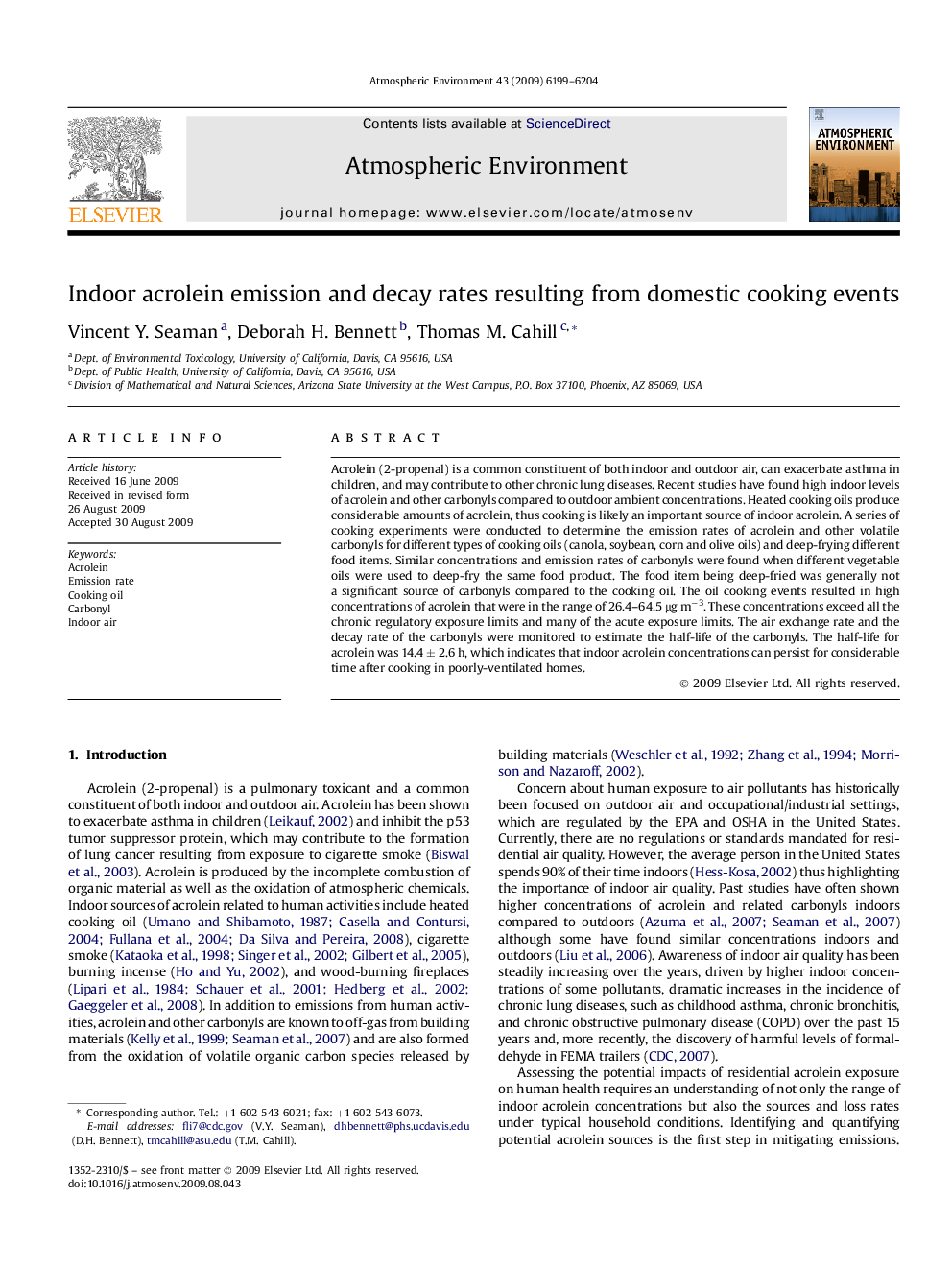| کد مقاله | کد نشریه | سال انتشار | مقاله انگلیسی | نسخه تمام متن |
|---|---|---|---|---|
| 4441208 | 1311097 | 2009 | 6 صفحه PDF | دانلود رایگان |

Acrolein (2-propenal) is a common constituent of both indoor and outdoor air, can exacerbate asthma in children, and may contribute to other chronic lung diseases. Recent studies have found high indoor levels of acrolein and other carbonyls compared to outdoor ambient concentrations. Heated cooking oils produce considerable amounts of acrolein, thus cooking is likely an important source of indoor acrolein. A series of cooking experiments were conducted to determine the emission rates of acrolein and other volatile carbonyls for different types of cooking oils (canola, soybean, corn and olive oils) and deep-frying different food items. Similar concentrations and emission rates of carbonyls were found when different vegetable oils were used to deep-fry the same food product. The food item being deep-fried was generally not a significant source of carbonyls compared to the cooking oil. The oil cooking events resulted in high concentrations of acrolein that were in the range of 26.4–64.5 μg m−3. These concentrations exceed all the chronic regulatory exposure limits and many of the acute exposure limits. The air exchange rate and the decay rate of the carbonyls were monitored to estimate the half-life of the carbonyls. The half-life for acrolein was 14.4 ± 2.6 h, which indicates that indoor acrolein concentrations can persist for considerable time after cooking in poorly-ventilated homes.
Journal: Atmospheric Environment - Volume 43, Issue 39, December 2009, Pages 6199–6204